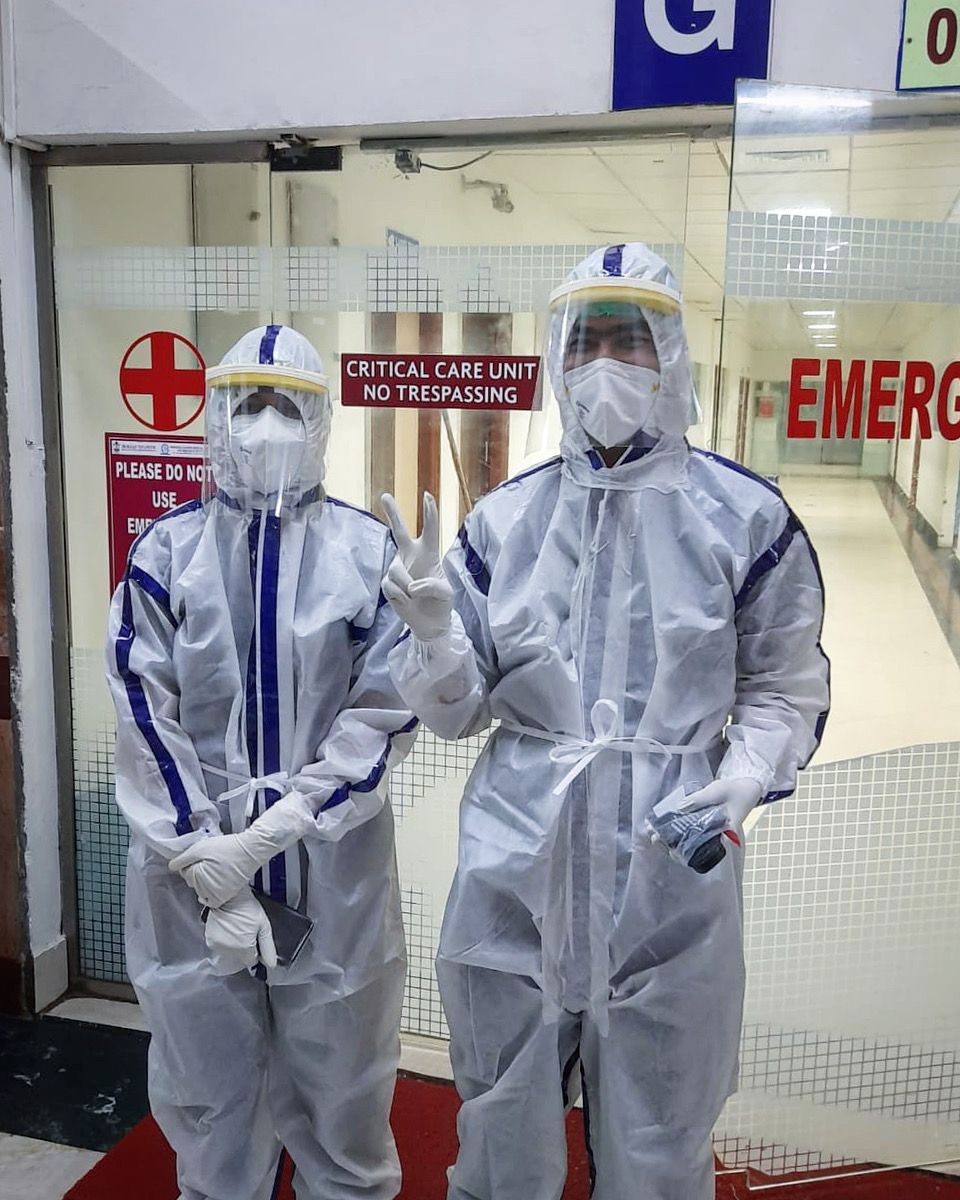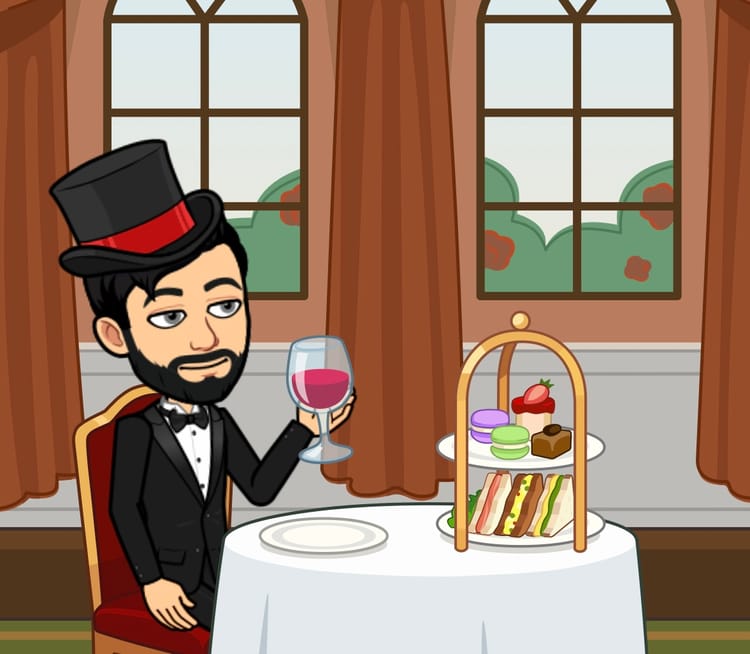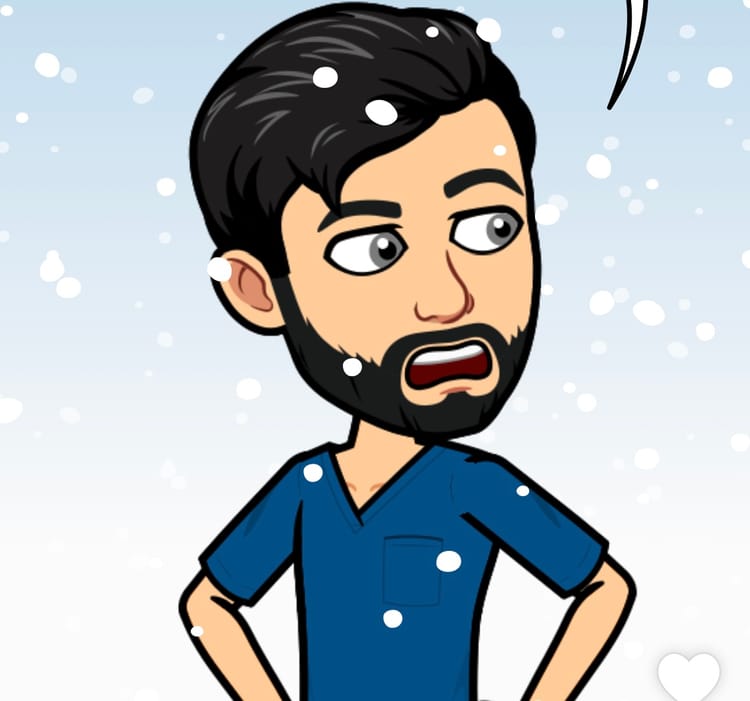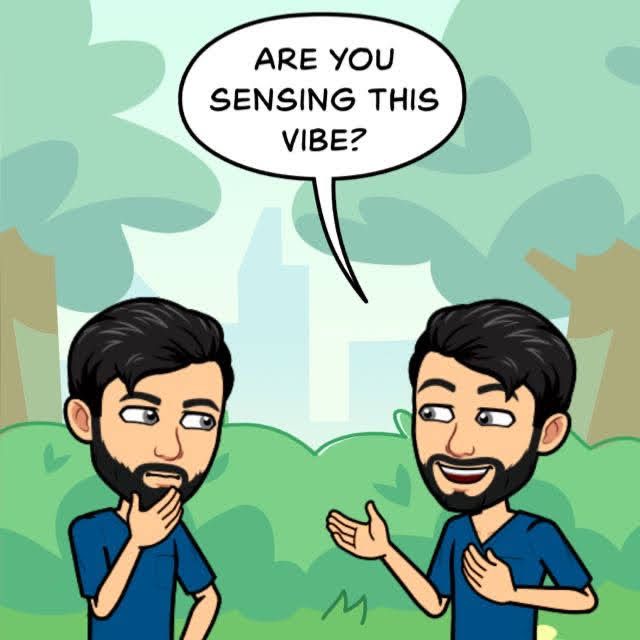A day in the life, In a PPE

Needless to say, COVID-19 caught the entire world off guard. Even The Simpsons didn’t see this one coming. Never before have soo many nationalities, governments and media agencies aligned spread the same propaganda. It is almost surreal and yet, bizarre. As for India, quite frankly the country is in a mess, the COVID train is off the rails and no one knows where it is headed.
Personal Protective Equipments (PPEs)!
You’ve probably heard this word being thrown around a lot right after words like ‘pandemic’, ‘social distancing’ and ‘#washyourhands.’ One might think that PPE is a brand new addition to their 2020 vocabulary list but this one has actually been around for a while and you may have even used one, without being aware of it. Any protective gear worn on top of one’s body is technically a PPE. Dentists wear gloves, masks and goggles on a daily basis as PPE before loitering inside our oral cavity. Laborers wear helmets, goggles and fluorescein striped jackets as PPE at construction sites as PPE. However, it is one thing to prepare and protect ourselves against threats we can see and gauge with our naked eye, while it is an entirely different thing to safeguard ourselves from one that is one millionth the size of us running rampant throughout the world. PPE for healthcare professionals (HCP) need to cover every inch of the body and if you were not aware of the components involved in forming one, it would look just like a giant uncomfortable raincoat! Quite honestly, I wouldn’t blame you for coming to that inference.
Now if I just told you PPEs are clumsy, cumbersome and uncomfortable, that wouldn’t even be scratching the surface. You’ve probably heard all this by now. So let’s elaborate on it for a bit. Needless to say, over the past six months, PPE kits have becomes quite fancy and complex, but for all intents and purposes, I would be describing a standard PPE kit, the bare minimum expected. If you had to don (put on) a PPE for some reason, the first (or ideal) thing you would have to do would be to wear a pair of scrubs because it gets quite hot in there (more on this later). Keeping some alcohol based hand sanitizer handy, you would have to wear two, sometimes three pairs of latex gloves, a double mask system (ideally a N-95 respirator with a 3-ply surgical mask), a surgical cap, plastic eye wear, a face-shield, the PPE overall including the boots and hoodie. But it’s not over yet. This was the primary precaution. An attender is usually present when a HCP dons their PPE following after which it is his/her job to double check for leaks and seal them. Ideally surgical micropore tape is bandaged around vulnerable sites like at your wrists and ankles where the gloves and boots overlap with the PPE overalls, sometimes even around the neck, which is another weak zone. Now, you are protected and its time to protect your belongings. As a rule of thumb anything taken into a COVID ward cannot be brought back out lest to risk infection. Phones need a plastic protection case (a zip lock pouch) and you carry scraps of paper to take down daily notes along with a pen, which you’ll have to leave behind too. This is the point where I let you know that I have gone through great lengths to describe how a PPE is actually useful because we’ve all seen that one person wear it like their new Prada jacket at the airport or mall.
Once you’ve donned, until your shift ends which is somewhat between the 6-8 hour range, you are locked in. Within minutes you’re completely drenched inside out and you’re breathing in your own expired air. As you start to work, you realize all your movements are restricted, your hearing is impaired and your vision is compromised. You are quite literally boiling like a potato inside a cooker. I would say the first 20-30 minutes are the worst, because your feel your body revolting against the change of environment it has been put into. This is followed by the last 60 minutes when you’re absolutely disoriented and functioning on near auto-pilot. If you’re hungry or need to use the washroom, you have to wait it out or hold it in. Unless you’re not posted in a COVID ICU or a special ward, air-conditioning is out of the question and I probably don’t need to separately reiterate what shifts during high noon feel like.
Most HCWs – whether doctors, staff nurses or attendants, take a handover (work-list) from the previous duty team, set-up the things that need to be during their shift. Following this, they don in with the objective of efficiently finishing the work and then avoid as much activity as possible to conserve enough energy to actually last through the shift. This is because once you’re in, you’re cut off from the outside world, everyone inside with you is in a PPE too, with their work-list of things to do. You are alone, in every sense of the word.
Everything is that much harder in a PPE. Measuring vitals (like pulse, blood pressure and oxygen saturation) takes some getting used to. Physical examinations and basic procedures like establishing an I.V. line or inserting a catheter become take quadruple the time as they normally would. With three pairs of latex gloves over your hands, your fingers are perpetually constricted to take the shape of a claw-hand. Holding a pen and noting down two lines is like battling a muscle dystrophy.
You can only doff (remove) your PPE when you receive confirmation that the HCW of the next shift has reported or, donned in. Doffing is when you need to be the most conscientious and everything can go horribly wrong after being cautious for the entire shift. You doff with the mentality that every part of your body that was exposed till now is infected. Because COVID is speculated to spread via fomites, any sudden movement would release the virus into the air from the PPE, allowing it to settle back on you! You remove your layers outside-inwards, slowly using disinfectant during every step, turning the PPE inside-out as you take it off. One wrong move here and you have effectively infected yourself. As the layers of the PPE come off, your body breathes new life once again, however, unfortunately at this point, you are hungry, thirsty, soaking wet, drenched in your own sweat with a bladder that’s about to burst. Once you’ve left the doffing room, is mandatory to take a soap water bath and soak your scrubs in alcohol based detergent to destroy any virus that may have survived this ordeal.

Why did I have to explain all this in such minute detail?
Simple, because it needs to be said. And, it needs to be understood.
I am sure that as you spent the past 5 minutes reading this, a HCW has either donned in or doffed off, in some part of the world. The threat that COVID poses is real. The effort that HCWs take to manage COVID on a daily basis is no joke. If you are a HCW, I send you my respect for what you’re doing on a daily basis. If you have a ‘PPE story’ to share, I invite you to share it. If you are not a HCW, I hope this read gave you some insight into what life in a PPE is like. Maybe you can share it with someone and make them aware too.
Leave a comment below. It would mean a lot to me.
Footnotes: Donning and doffing is elaborate multi-step procedure. For the sake of making this article palatable I’ve excluded the detailed procedure and mentioned the bare essentials.
Click here if you wish to know more about PPEs
Enjoyed the read? Consider subscribing to my newsletter, ❄️ Freezethawed, to get a weekly update on thoughts pondered upon by me, insights I’ve been exposed to and may be some interesting facts I’ve encountered – delivered straight to your inbox.
Click here: ❄️ Freezethawed: The Newsletter
Reach out to me: contact@anujeetpaul.com
Until next time!




